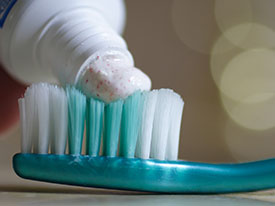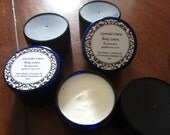I don't typically think of adding pasta to beans, but this goulash was perfect over egg noodles.
Ingredients:
1 Tablespoon oil and 1 Tablespoon margarine
1 cup onion diced
3 cloves garlic
1 cup carrots diced
2 stalks celery diced
1 pound small red beans soaked overnight
1 bay leaf
1 teaspoon oregano
1 can crushed tomatoes
Salt and pepper
1 Tablespoon minced parsley
1 Tablespoon red wine vinegar
2 Tablespoons butter, 1 Tablespoon Flour, 1/2 cup onion, 1 Tablespoon paprika
Bring beans to a boil and simmer while you are sauteing vegetables. Melt margarine with oil. Add 1 cup onion and two cloves garlic. Saute about 5 minutes. Then add carrots and celery and saute for another 5 minutes. Drain beans and add to slow cooker with vegetables. Add crushed tomatoes, bay leaf, oregano, salt and pepper. Cook on high for 6 hours. Add 1 more clove garlic crushed and adjust seasoning. Continue cooking on high for three hours. Saute butter in frying pan, add onions, cook for 3 minutes, then add flour an stir until thickened. Stir in paprika then add 1/2 cup of sauce from beans. Mix back into crock pot with 1 Tablespoon wine vinegar and parsley. Serve over cooked noodles. I adjusted this recipe for a crock pot for convenience, but it's necessary to cook on high. It could be cooked on the stove in less time.
Tuesday, January 26, 2016
Thursday, January 21, 2016
Banning Micro-Beads for Cleaner Water
 |
| photo: Thegreenj on Wikimedia Commons |
Microbeads are comprised of tiny particles of plastic, e.g. polyethylene, polypropylene, polyethylene terephthalate, and polymethyl methacrylate. They are added to toiletry products such as facial scrubs, body washes, and toothpastes as an abrasive to help clean and exfoliate.
They do not biodegrade and can bind to other pollutants, creating an even greater hazard. Once released to surface waters, they are often mistaken by fish as food and are ingested. They can then work themselves up the food chain, by being consumed by larger predators, including humans. Some studies are showing health impacts to wildlife that consume micro- plastics (Nature.com, published November 21, 2013)
Created in the 1970s, they are now found in hundreds of products, including those used for personal care. The problem of microbeads and water pollution was not raised until the publication of a 2009 study by Fendall and Sewell demonstrating that these small particles directly enter the marine environment from households. Following that, a Dutch organization of environmental experts, the North Sea Foundation, started requesting companies to stop adding microbeads to their products in 20011; and along with the Plastic Soup Foundation, launched the Beat the Microbead international campaign.
Although many companies have already voluntarily pledged to stop using microbeads, the U.S. ban establishes deadlines that will accelerate the process. Hopefully other countries will follow suit. This ban is one positive step to controlling the pervasive plastic pollution in the worlds oceans. In the meantime, to know whether or not a product contains microbeads, there is a Beat the Microbead App which can be downloaded at http://beatthemicrobead.org/en/.
Saturday, January 16, 2016
Butternut Squash and Vegetable Stew
Ingredients:
1 Butternut Squash cubed
4 large carrots diced1/2 sweet onion chopped
2 cloves garlic chopped
1 can cannellini beans
1 large can diced tomatoes
2 cups broth
1 teaspoon cumin
1/2 teaspoon crushed red pepper
salt
1 tablespoon brown sugar
1/2 cup chopped spinach
1/2 cup chopped kale
This recipe can be made in either a slow cooker or on the stove. Add all ingredients except greens to slow cooker or large soup pot. 1 hour before done, add kale and/or spinach. Serve alone or over couscous.
Monday, January 11, 2016
U.S. Department of Agriculture and U.S. Department of Health and Human Services Release New Dietary Guidelines
 |
| Fresh vegetables... |
 |
| and berries contribute to healthy eating patterns. |
The Dietary Guidelines Advisory Committee's report also drew connections between diet and sustainability of natural resources. By making healthier food choices one can also have a positive impact on the environment since eating less red meat and buying fresh foods locally have a lower net impact on the planet. Unfortunately, any references to diet and the environment do not appear in the Dietary Guidelines as the USDA and USDHHS responded in a Statement last October that the Guidelines are not the appropriate vehicle to address sustainability. What a missed opportunity.
I know that my daily choices, be it diet, work, or recreation, have direct impacts to the health and future of the planet, and until this concept is as transparent as breathing is to living, the more times the connections of our day to day activities and sustainability are made the better.
Tuesday, January 5, 2016
Going Natural with Personal Care Products
Whether as a stocking stuffer or through a gift exchange, you may have received some soaps, lotions, or other personal care products over the holidays. Hopefully, if you did, they were free of toxic chemicals. Considering that skin is a person's largest organ (approximately 22 square feet (1) ) that regulate body temperature and provide protection against harmful elements, what it is exposed to directly impacts your health. Although one of skin's functions is to protect our body from exposure to hazards, it will absorb into the bloodstream a significant portion of what it touches. Many people have obvious allergic reactions when their skin is exposed to certain ingredients that are added to soaps and lotions. However, even people who don't have any apparent allergies, exposure to the cocktail of chemicals in many soaps and lotions can results in long-term health consequences. Many added ingredients have been shown to be carcinogenic or result in birth defects and learning disabilities. The vast majority of these chemical additives have never been completely evaluated to determine their safety.
Fortunately, it is becoming easier to find "natural" products, whether it be at a local store, farmers market, or on-line. Just be aware that it's important to read the ingredients list since the words "all-natural" or "healthy" have no defined meaning. I have been misled myself, by picking up a shampoo labeled as "natural", only to find that it may have contained some plant extracts, it also contained propylene glycol (a known carcinogen) and sodium lauryl sulfate (a corrosive cleaning agent).

You can find safe and healthy products from well-known manufacturers such as Burts Bees, a Maine company that started in 1984 making bees-wax candles. As with organic foods, you may be a bit more for toxic-free products, but you don't have to spend a fortune. For example, when it comes to bars of soap, sometimes basic is best. For example, Dr. Bronner's has been making soaps since 1858 in Germany and since 1948 in America. They sell certified organic, fair trade products that can be bought on-line or are sold in chain stores such as Target and Walmart. Finally, more and more people are venturing into the realm of home-made soaps and lotions, so check around with family and friends. Many people don't advertise, but their personal hobby often results in extra product to sell. For example, in our family, my niece, who is currently studying to become a Physician's Assistant, has made quilts and other crafts for years, but she recently expanded her craft to personal care products. She sells these occasionally at farmer's markets and on-line at gpsplace.etsy.com.
With so many options out there, why not make 2016 the year to go natural, in the truest sense of the word, not just with what you eat, but with what you put on your skin as well?
(1) http://science.nationalgeographic.com/science/health-and-human-body/human-body/skin-article/
Fortunately, it is becoming easier to find "natural" products, whether it be at a local store, farmers market, or on-line. Just be aware that it's important to read the ingredients list since the words "all-natural" or "healthy" have no defined meaning. I have been misled myself, by picking up a shampoo labeled as "natural", only to find that it may have contained some plant extracts, it also contained propylene glycol (a known carcinogen) and sodium lauryl sulfate (a corrosive cleaning agent).

 |
| Lavender Citrus Body Lotion from GPs Place |
With so many options out there, why not make 2016 the year to go natural, in the truest sense of the word, not just with what you eat, but with what you put on your skin as well?
(1) http://science.nationalgeographic.com/science/health-and-human-body/human-body/skin-article/
Subscribe to:
Posts (Atom)


